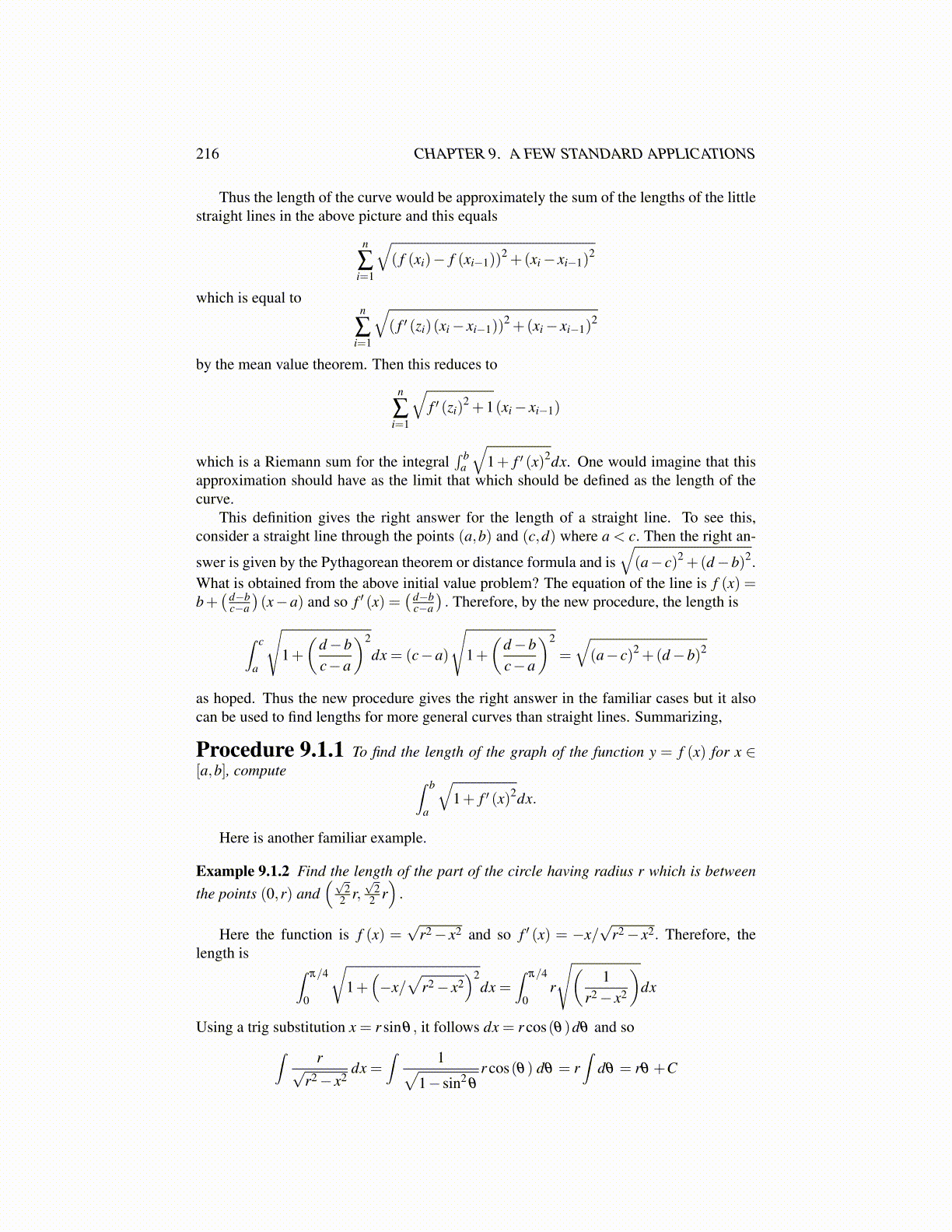
216 CHAPTER 9. A FEW STANDARD APPLICATIONS
Thus the length of the curve would be approximately the sum of the lengths of the littlestraight lines in the above picture and this equals
n
∑i=1
√( f (xi)− f (xi−1))
2 +(xi − xi−1)2
which is equal ton
∑i=1
√( f ′ (zi)(xi − xi−1))
2 +(xi − xi−1)2
by the mean value theorem. Then this reduces to
n
∑i=1
√f ′ (zi)
2 +1(xi − xi−1)
which is a Riemann sum for the integral∫ b
a
√1+ f ′ (x)2dx. One would imagine that this
approximation should have as the limit that which should be defined as the length of thecurve.
This definition gives the right answer for the length of a straight line. To see this,consider a straight line through the points (a,b) and (c,d) where a < c. Then the right an-
swer is given by the Pythagorean theorem or distance formula and is√(a− c)2 +(d −b)2.
What is obtained from the above initial value problem? The equation of the line is f (x) =b+( d−b
c−a
)(x−a) and so f ′ (x) =
( d−bc−a
). Therefore, by the new procedure, the length is
∫ c
a
√1+(
d −bc−a
)2
dx = (c−a)
√1+(
d −bc−a
)2
=
√(a− c)2 +(d −b)2
as hoped. Thus the new procedure gives the right answer in the familiar cases but it alsocan be used to find lengths for more general curves than straight lines. Summarizing,
Procedure 9.1.1 To find the length of the graph of the function y = f (x) for x ∈[a,b], compute ∫ b
a
√1+ f ′ (x)2dx.
Here is another familiar example.
Example 9.1.2 Find the length of the part of the circle having radius r which is betweenthe points (0,r) and
(√2
2 r,√
22 r).
Here the function is f (x) =√
r2 − x2 and so f ′ (x) = −x/√
r2 − x2. Therefore, thelength is ∫
π/4
0
√1+(−x/
√r2 − x2
)2dx =
∫π/4
0r
√(1
r2 − x2
)dx
Using a trig substitution x = r sinθ , it follows dx = r cos(θ)dθ and so∫ r√r2 − x2
dx =∫ 1√
1− sin2θ
r cos(θ) dθ = r∫
dθ = rθ +C